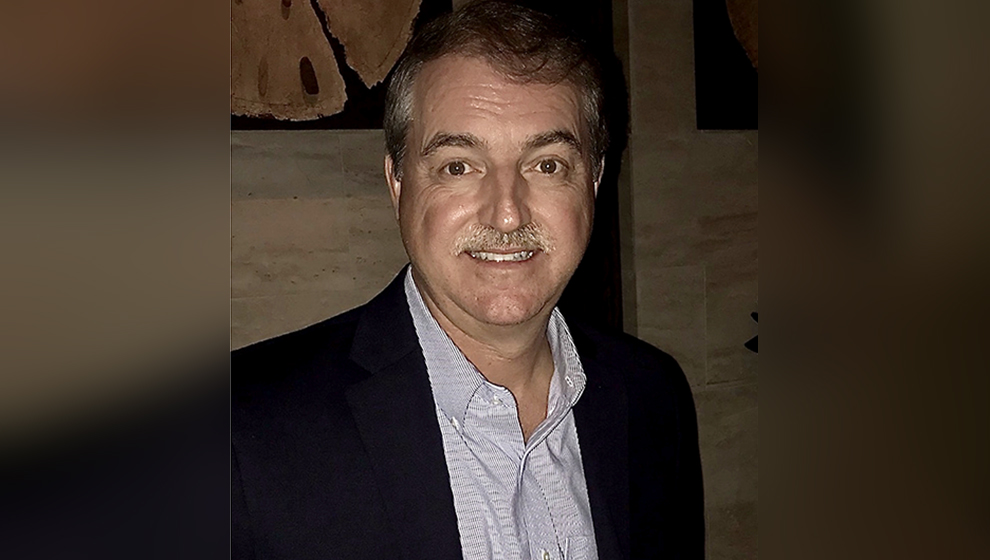Dr Joseph Borrelli shares an overview of ACS below, along with useful tips on what litigants, counsel and expert witnesses should know about the condition.
In brief, what is acute compartment syndrome (ACS)?
An acute compartment syndrome (ACS) is a condition characterised by increased intra-compartment pressure within an osseous-fascial muscle compartment. This increased tissue pressure causes decreased blood flow and oxygen perfusion within the compartment and, if left untreated, this compromised blood flow threatens the viability of the resident muscle and nerve often leading to long-term musculoskeletal dysfunction of the limb. Generally, an ACS follows a blunt injury to a portion of the body resulting in swelling, tissue damage, inflammation, and local ischemia. This typical body’s reaction to injury can lead to patchy oxygen metabolism deficiencies within the injured compartment, which accelerates the cycle to further increase intra-compartment tissue pressures, leading to worsening of the ACS.
Acute compartment syndromes are one of the truly time-sensitive, limb-threatening, and life-threatening diagnoses in orthopaedic surgery. The diagnosis of an ACS is typically based on clinical symptoms and physical findings and can be difficult to make, particularly when they arise in unusual circumstances or in obtund and multiple injured patients. As a result of these factors, the development of acute compartment syndrome places the treating physician – commonly a primary care physician, including orthopaedic surgeons – at high risk of litigation, particularly in instances of delayed diagnosis or effective treatment.
Acute compartment syndromes are one of the truly time-sensitive, limb-threatening, and life-threatening diagnoses in orthopaedic surgery.
Can the condition cause death or lasting disability?
The consequences of an acute compartment syndrome can be significant and typically correlate with the timing of diagnosis and the timing and adequacy of the treatment. The treatment for an ACS is fasciotomy, a surgical release of the enveloping muscle fascia, generally performed through long incisions along the length of the muscle compartment. Once an ACS has developed, “time is tissue” – that is once the ACS reaches a critical point muscle and nerves begin to die. If the ACS is allowed to progress to the point where there is widespread muscle and nerve necrosis (death), the subsequent function of the limb will be significantly compromised.
If there is enough residual perfusion to maintain the viability of the limb and the systemic sequelae are not of sufficient severity to warrant amputation, the contracted state of the affected limb combined with the changes in sensation within the limb will leave the extremity with little function and commonly in chronic pain. In the event of extensive muscle necrosis, neurologic compromise and the onset of complications often associated with trauma and infection, amputation of the affected limb is sometimes required. Occasionally, the compartment syndrome can cause multi-system organ failure and death of the patient.
What circumstances might cause a person to develop ACS?
ACS has been associated with a variety of situations which lead to a compromise in the blood flow within the osseous-fascial compartment(s) in question. ACSs are most associated with a traumatic injury (with or without a fracture). However, they have been known to develop because of significant swelling or bleeding into a fascial compartment(s) and significant external pressure (e.g. circumferential burns, casts, wraps) of a limb, particularly in the setting of limb swelling following injury or surgery. ACSs have also been known to occur because of the development of a space-occupying mass (e.g. infection, wayward infusion, bleeding) into a fascial compartment. A lesser recognised cause of compartment syndrome has been referred to as a “well-leg compartment syndrome” (WLCS). A WLCS develops in a previously uninjured extremity (most often the leg), commonly because of prolonged static positioning of a patient on an operating room table. This positioning is believed to negatively influence the perfusion of the limb, causing the development of increased intra-compartmental pressures and a WLCS.
The consequences of an acute compartment syndrome can be significant and typically correlate with the timing of diagnosis and the timing and adequacy of the treatment.
What complications does this cause in personal injury litigation?
Unfortunately, ACSs have been shown to develop in a variety of clinical situations and therefore there is not a single common cause responsible for their development. Additionally, ACS may develop soon after an injury or they may develop gradually and sometimes up to 2-3 days after the injury. Also, although the signs and symptoms associated with an ACS are well-described, they do not always present themselves uniformly or in a well-defined order, leading to clinical confusion and uncertainty. When these factors are combined with a patient who has an altered mental status or is obtunded/unconscious with clinicians who are not familiar with ACS the diagnosis can be delayed, sometimes with disastrous results. These confounding factors, which delay the diagnosis of an ACS, speak to the need for all physicians to be aware of the signs and symptoms of an ACS and remain vigilant to the possibility of its development in just about any patient.
How have you encountered ACS in your work as an expert witness?
I have encountered ACS, as well as WLCS, in my work as an expert witness on multiple occasions. I have reviewed cases where the diagnosis of the ACS should have been straightforward for the treating physician(s) and other cases where the diagnosis was considerably more difficult. Unfortunately, in a number of these cases the physicians appeared to lack a firm understanding of the variety of situations in which an ACS can develop, and in other cases the physicians and allied health staff failed to recognise the signs and symptoms of the ACS or had embarked on a treatment plan which made it more difficult to make the correct diagnosis in a timely fashion. In the latter scenario I have seen pain medicine being administered more frequently and in higher doses to relieve the pain when a surgical consult and fasciotomies to release the pressures within the compartment were instead indicated.
What methods did you use to handle these cases?
Providing expert opinion in ACS cases can be challenging. I meticulously review and re-review every piece of documentation available. These reviews include physician notes (admitting physicians, treating physicians, consulting physicians, residents and medical student notes when available), nursing and allied health notes, all laboratory values, vital signs including pain assessments over time, medication records (keeping an eye out for the patients needing greater and greater amounts of pain medications at shorter time intervals), as well as all images and tests. If available I meticulously read and re-read depositions of everyone involved in the care of the patient, as well as that of the patient and everyone who has first-hand knowledge of the events that took place. Based on these reviews I create a timeline of pertinent events.
Providing expert opinion in ACS cases can be challenging.
I also perform a detailed search of the relevant medical literature to assure myself that I am abreast of newly published information regarding ACS. Once I have reviewed all the available medical records, created an accurate timeline, assured myself that I am current regarding the relevant literature on the topic, I write my report. Once written, I review and revise my report as many times as necessary to assure accuracy and consistency with the facts on hand, and that it clearly reflects my opinions based on my understanding of the records, my education and training and clinical experience.
What should litigants and counsel be aware of in a case involving ACS?
The diagnosis of an acute compartment syndrome can be difficult to make at times. However, because patients often suffer life-altering consequences, including loss of limb function or a loss of the limb itself, not to mention death, a delay in the diagnosis and treatment in this day and age is unacceptable. Unfortunately, ACSs present themselves in a variety of different scenarios, sometimes in a delayed or inconsistent fashion and often in patients who may have other significant injuries or illnesses, all of which may legitimately delay its diagnosis. However, once an ACS has been made or found to be most likely present there are few reasons to delay definitive treatment. The phrase “a chance to cut is a chance to cure” is no better exemplified than in the setting of an Acute Compartment Syndrome.
Why have you taken a particular interest in ACS as a medical professional?
The results of a missed acute compartment syndrome, including well-leg compartment syndrome, are often devastating for the affected patient. In certain situations the diagnosis of an ACS is straightforward, while at many times the diagnosis can be difficult to make definitively. Physicians and trainees need to understand the pathophysiology of a compartment syndrome, which means they must be familiar with the most common presenting signs and symptoms of an ACS and patient and clinical factors that can make an accurate and timely diagnosis difficult. I have also taken a particular interest in this topic as a medical professional also because of my trauma training and vast clinical experience in the field and have developed a thorough understanding of ACSs. I am therefore well positioned to decipher from complex, confusing, and sometimes inconsistent medical records what took place regarding the development and treatment of an ACS. By doing so I can provide an objective expert opinion that may exonerate a physician or physicians that did the right thing or a patient that was treated incorrectly.
The phrase “a chance to cut is a chance to cure” is no better exemplified than in the setting of an Acute Compartment Syndrome.
About Joseph Borrelli Jr, MD, MBA
What attracted you to the idea of specialising as an expert witness?
Being an expert witness allows me the opportunity to use my education, training, and vast clinical experience to help determine what may have gone wrong, how an untoward outcome could have been prevented and help differentiate between a bad outcome from substandard clinical care. It also allows me the opportunity to help patients and physicians who may have been harmed or unjustly accused of wrongdoing respectively.
Furthermore, being an expert witness is intellectually stimulating and challenging, and I believe being an expert witness helps physicians police their own profession.
What advice would you offer to young medical students looking to enter your line of work?
Orthopaedic surgery is an exciting and innovative field. Orthopaedic residencies are still one of the most sought-after residencies and generally only those students in the top of their medical school class are considered for such a position. Orthopaedic surgery is a demanding field and requires dedication and the desire to help others and make a difference in patients’ lives. The hours are long, the demands are great – at times almost never-ending – but the rewards are great too. Orthopaedic surgeons are often thought as the “go-to” surgeon, particularly when an injured patient’s life, or limbs, are on the line. It is a noble profession and much-needed in this day and age when people are living longer and remaining active well into their 80s.
[ymal]
Can you tell us anything about your plans for the coming year?
In the coming year I plan on continuing to provide exceptional, compassionate and evidence-based patient care. I plan to continue to contribute to the current body of knowledge, in the field of orthopaedic surgery, by continuing my current research and editing activities. I also plan on continuing to provide well-thought-out, nonbiased, evidence-based expert opinion when retained.
West Coast Musculoskeletal Institute
14555 Cortez Blvd, Brooksville, FL 34613
Tel: +1 352 556 4823
Dr Borrelli earned his Bachelor of Science degree from the University of Maine (with Distinction) and his Doctor of Medicine from the University of South Florida, as well as a Master of Business Administration from the University of Texas. Over the course of his 27-year career, Dr Borrelli has published more than 85 peer-reviewed articles, numerous book chapters and has co-edited three orthopaedic textbooks. Dr Borrelli has been certified by the American Board of Orthopaedic Surgery continuously since 1997 and has been an active member of the Orthopaedic Trauma Association since 1989 and is currently a Fellow of the American Academy of Orthopaedic Surgeons.
Dr Borrelli currently enjoys a full-time orthopaedic practice in west central Florida. His practice includes total joint replacement and the treatment of traumatic musculoskeletal injuries including their complications. One of the areas of orthopaedic surgery that Dr Borrelli focuses his attention to is the diagnosis and treatment of acute compartment syndrome (ACS) and well-leg compartment syndrome (WLCS).





















